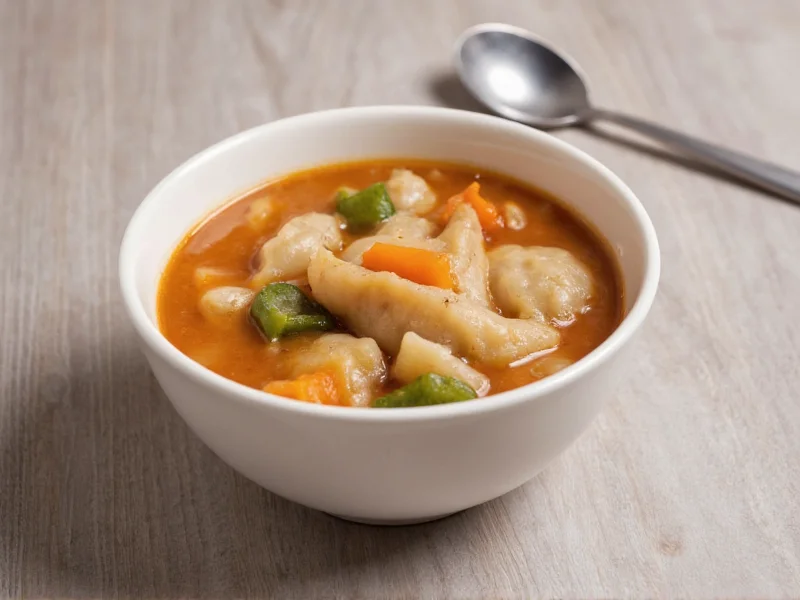The Complete Guide to Perfect Frozen Soup Dumplings
Soup dumplings, or xiaolongbao, represent one of Chinese cuisine's most delicate culinary achievements. When purchased frozen, these delicate parcels present unique cooking challenges that differ significantly from fresh versions. Understanding the science behind frozen soup dumplings transforms potentially disastrous results into restaurant-quality meals at home.
Understanding Frozen Soup Dumpling Composition
Frozen soup dumplings contain a carefully engineered filling where broth transforms into a solid gel when chilled. This gelatinized broth liquefies during proper cooking, creating the signature "soup" inside each dumpling. Commercial frozen varieties typically use food-grade gelatin or natural collagen from pork skin to achieve this effect.
The wrapper thickness in frozen soup dumplings differs from fresh versions. Manufacturers adjust dough composition with additional wheat protein or modified starches to withstand freezing temperatures without becoming brittle. This scientific approach prevents cracking during storage but requires specific cooking techniques to achieve optimal texture.
Optimal Cooking Methods Compared
| Cooking Method | Time Required | Texture Result | Success Rate | Best For |
|---|---|---|---|---|
| Steaming | 10-12 minutes | Tender wrapper, intact soup pocket | 95% | Traditional preparation |
| Pan-Frying (Potsticker style) | 8-10 minutes | Crispy bottom, steamed top | 85% | Crispy texture lovers |
| Boiling | 6-8 minutes | Softer wrapper, higher burst risk | 70% | Quick preparation |
| Deep Frying | 3-4 minutes | Crispy exterior, compromised soup | 40% | Not recommended |
Steaming Method: Preserving Soup Integrity
Steaming represents the most reliable technique for cooking frozen soup dumplings without breaking. Place dumplings on parchment paper or cabbage leaves in a bamboo steamer, ensuring space between each piece. Bring water to a rolling boil before adding the steamer. Maintain medium-high heat throughout cooking.
Key success factors for steaming frozen soup dumplings include: using boiling water (not cold water) to create immediate steam pressure, avoiding lifting the lid during cooking to maintain consistent temperature, and allowing dumplings to rest for 2 minutes after cooking before serving. This resting period stabilizes the internal soup temperature, preventing explosive bursts when bitten.
Avoiding Common Frozen Dumpling Disasters
Many home cooks make critical errors when preparing frozen soup dumplings. The most frequent mistake involves thawing before cooking. Temperature fluctuations cause the gelatinized broth to liquefy prematurely, overwhelming the wrapper's structural integrity. Another common issue involves overcrowding the cooking vessel, which creates uneven heating and increases breakage risk.
Water temperature management proves crucial when boiling frozen soup dumplings. Start with vigorously boiling water, then reduce to a gentle simmer after adding dumplings. Rapid boiling creates turbulent water that damages delicate wrappers. For pan-frying, add just enough water to create steam after initial browning, then cover immediately to finish cooking through steam rather than direct heat.
Storage Guidelines for Maximum Freshness
Proper freezer storage extends frozen soup dumpling shelf life while maintaining quality. Keep dumplings at 0°F (-18°C) or below in airtight containers or vacuum-sealed bags. Separate layers with parchment paper to prevent sticking. For best results, consume within 3 months despite packaging claims of longer shelf life.
Freezer burn represents the primary enemy of frozen soup dumplings. Ice crystal formation damages wrapper integrity and alters filling texture. Check packaging for frost accumulation, which indicates temperature fluctuations. Never refreeze previously frozen soup dumplings, as repeated freezing cycles destroy the delicate gel structure necessary for proper soup formation.
Troubleshooting Cooking Issues
When soup dumplings burst during cooking, the most likely causes include: excessive heat causing rapid broth expansion, insufficient wrapper thickness for frozen product, or physical disturbance during cooking. To minimize bursting, maintain consistent medium heat and avoid moving dumplings unnecessarily.
Dumplings sticking to cooking surfaces typically indicates improper temperature control. For steaming, ensure adequate water level to prevent burning but avoid water touching the dumplings. When pan-frying, use sufficient oil and allow proper browning before adding water. If dumplings remain doughy after cooking, they likely needed additional time - frozen varieties require 20-30% longer cooking than fresh versions.
Can I cook frozen soup dumplings without thawing?
Yes, cooking frozen soup dumplings without thawing is essential for success. Thawing causes the gelatinized broth to liquefy prematurely, leading to bursting during cooking. Always cook directly from frozen using appropriate timing adjustments.
How do I prevent frozen soup dumplings from bursting?
Prevent bursting by maintaining consistent medium heat, avoiding overcrowding, and never thawing before cooking. When steaming, use boiling water to create immediate steam pressure. For pan-frying, add water carefully after initial browning to create gentle steam rather than direct high heat.
What's the ideal cooking time for frozen soup dumplings?
Frozen soup dumplings require 10-12 minutes when steaming, 8-10 minutes for pan-frying, and 6-8 minutes for boiling. These times are approximately 20-30% longer than fresh dumplings. Always check one dumpling first to verify doneness before serving the entire batch.
How can I tell when frozen soup dumplings are properly cooked?
Properly cooked frozen soup dumplings show a translucent wrapper with visible soup inside. The wrapper should feel slightly firm but yielding when gently pressed. Steam should escape when pierced, and the filling should reach 165°F (74°C) internally. Avoid overcooking, which causes bursting.
What's the maximum freezer storage time for soup dumplings?
For optimal quality, consume frozen soup dumplings within 3 months despite packaging claims of longer shelf life. Extended storage leads to freezer burn and degradation of the gel structure that creates the soup filling. Store at 0°F (-18°C) or below in airtight containers with parchment paper between layers.











 浙公网安备
33010002000092号
浙公网安备
33010002000092号 浙B2-20120091-4
浙B2-20120091-4